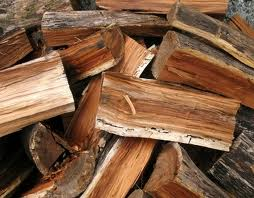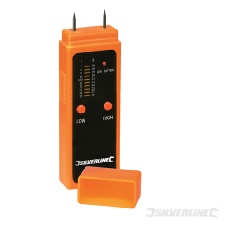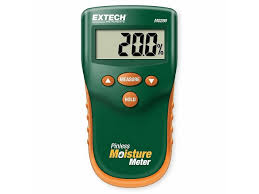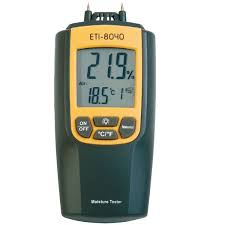
Professional Chimney Sweep Tamworth, Sutton Coldfield, Lichfield, Nuneaton, Birmingham, Solihull & Surrounding Telephone 07407 453630
MASTER SWEEPS
CHIMNEY SWEEP SPECIALIST
07407 453630


 Click Here To Fast Book!
Click Here To Fast Book!
Master Sweeps. 4 The Bodnetts, Plantation Lane, Hopwas, Tamworth, Staffs B78 3AU Tel: 07407 453630

I regularly visit log suppliers in and around the South Staffordshire and West Midlands region and randomly moisture test the logs. Some of these suppliers are selling logs / wood with an alarmingly high moisture content. Some with moisture content as high as 35%-
The correct moisture content of wood for use in a fire appliance should be less than 20%.
As the winter burning season progresses the supply and availability of well seasoned logs diminishes. So, the best time to buy logs from a log supplier is in the summer to late summer months (before the winter rush for logs begins) when the logs will be reasonably well seasoned. Probably the worst time to buy logs from a log supplier is after the Christmas period / early new year. By this time the supply of seasoned wood has likely been exhausted and in response many suppliers will commence selling logs that are not appropriately seasoned.
Before buying your wood it is recommended that you ask the log supplier the moisture content of the wood they supply. Don't be surprised if the supplier says they don't know. Many log suppliers don't bother to check and few actually care. Their main objective is to sell you wood, regardless of moisture content. So, buyer beware!
You can prevent yourself from becoming the recipient of wood that is not good for burning by simply obtaining a moisture meter like one of the meters shown below. Just probe the wood by sticking the two prongs into the end of a log and read the display. If the reading is less than 20% buy the wood. If the reading is greater than 20% but less than 25% then at a push accept the load but ensure you get the load into your wood shed ASAP to allow it to season at little longer before using. If the reading is between 25% -
Moisture meters are available from a number of sources, including on-
Logs & Fuels




Use a wood moisture meter to test wood for water content before buying. Only burn seasoned wood.

Most people believe that it is the wood that is burning and causing the flames in their fire appliance. This is not so. It is actually the gases given off by the wood as it is heated that causes the flames and heat.
Wood that has not been properly seasoned will contain high levels of water and resins. It takes energy to drive the water and resins out of the wood and this energy, which should be delivered to the room in the form of heat, is instead used to heat up the water and resins in the wood. This is wasted energy.
This wasted energy should also have been used to heat up the wood in your fire appliance to the point where the wood begins to produce gases and vapours that are combustible and produce even more heat when ignited. Because the temperature levels required (115 degrees celsius plus) that cause the wood to produce the combustible gas vapours that then produce the heat and flames are not reached (due to the presence of water and resins in the wood) the fire produced will not give off the heat that the fuel (wood) is potentially capable of producing.
The water and resins / creosote will be driven out of the wood (smoke) during the burning process and have only one place to go, up your chimney flue. As the water (now steam) and smoke (containing the resins and creosote) travel up your flue the gases begin to cool down before they reach the top of the stack (your chimney pot). As these gases cool down they condense and deposit themselves on the inside of your chimney (or stainless steel liner if fitted). The condensed water interacts with the creosote deposits and a mild acid solution is formed. This acid is highly corrosive and will eat through a steel liner in no time at all and will also damage the mortar of your chimney. Once the acid eats its' way through the mortar (the cement between the bricks) or the stainless steel liner there is the potential for several other problems to arise.
For example, dangerous gases such as carbon monoxide may enter rooms upstairs, such as bedrooms. Also, a breached mortar joint will allow cooler air from the outside atmosphere to enter into the chimney flue. This will cause the hot gases inside the flue to cool down sooner than they should causing the gases to condense. A vicious circle is then created, causing further deposits of creosote to build up on the inside of the flue. The draw of the flue will also be reduced (the flow of the gases will slow down) with the net effect that your fuel will not burn correctly / optimally.Your fire appliance will also suffer the negative effects of burning unseasoned wood. Creosote build up, blackened door glass for example. The room in which the fire appliance is installed may also begin to develop an unpleasant smell of creosote.

Seasoned wood should always have a moisture content of less than 20%. Moisture meters can be obtained from sources such as E-
Thinking of buying a bag of wood or kindling from a petrol station forecourt? Think again. Those bags have been outside in all weathers and are likely to have absorbed a significant amount of moisture. In addition, buying your wood in this manner is not economical. Petrol stations (even some newsagents) sell these bags of wood at very inflated prices.
Softwood is good for getting a fire going as it 'catches' quicker than hardwood. Harwood burns longer (usually twice as long) and hotter than softwood. Therefore, a best practice is to start your fire off with softwood logs then add hardwood once the fire is going well.
Add wood / logs to your fire only one or two at a time. Never overload your fire appliance with wood. Doing so will cause the temperature in your appliance to decrease while energy is used to heat up the newly added wood (to produce those combustible gases and vapours). It may seem a nuisance to keep adding logs to a fire but by doing so you will help your fire to maintain a good working temperature. In turn this reduces that unwanted product of combustion, i.e., creosote.
Are you burning your wood correctly? Simply take a look at what is coming out of your chimney pot after the fire has been going for a while (30 minutes or so). See lots of smoke coming out of the chimney pot? If the answer is yes, then you are not burning your wood correctly. A correctly burning fire should produce very little smoke from the chimney pot.
Burning wood produces much more creosote and soot than burning coal. If burning wood you should have your flue swept at least once a year. If you use your wood burning appliance heavily over the winter period (day and night) then you should consider having your chimney swept twice during the burning season to remove the corrosive debris that will build up inside your flue in order to minimise corrosive damage to your flue, to ensure the flue diameter does not become reduced (producing a reduced draw ) and to minimise the risk of a chimney fire.

To arrange a chimney sweep call me on Tel: 07407 453630
Or leave a message requesting a call back and I will return your call within the hour
Alternatively, you can send me a message by filling in the form opposite and I will respond quickly to your enquiry.
If you are looking for a quote just let me know the approximate location of the property and the type of fire appliance you use, e.g, open fireplace or stove.
I will then provide you with the cost of a sweep.

 EMF Form Builder
EMF Form Builder